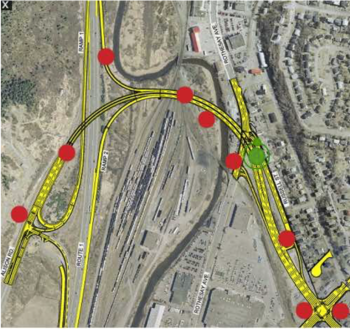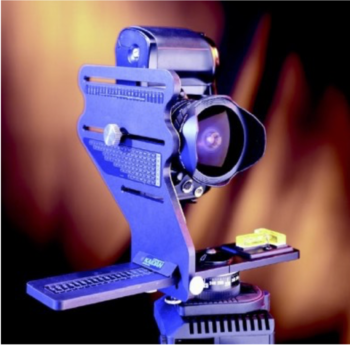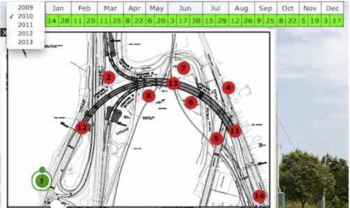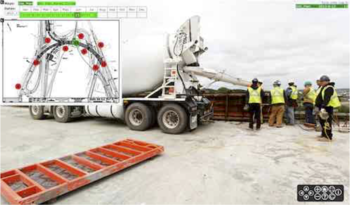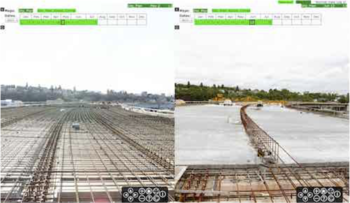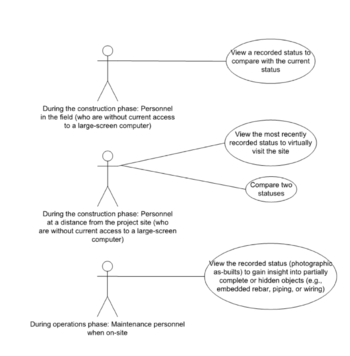VRDoc Project
// Place. Standard NBCC.ca Header here //
Contents
[hide]VRDoc
The NBCC Mobile First Technology initiative (MFTi) developed a mobile user interface prototype for http://VRDoc.ca , a Web-based system for documenting construction projects.
Research topics
construction management, panoramic images
VR Doc is a Web-based monitoring system for construction projects that enables that enables panoramic visualization of construction site status on specific dates and at specific locations. This system was developed by Professor Lloyd Waugh and his Construction Engineering & Management group within the Department of Civil Engineering at the University of New Brunswick. It has been used to document construction projects through Canada.
MFTi collaborated with Professor Waugh's team on the development of a mobile app interface to the VR Doc system.
VR Doc is a user-friendly virtual reality tool that is used to document and display the progress of a construction project.
Project Documentation Functionality in VR Doc
VR Doc is used to document a construction project in the following way:
- A fixed set of locations within a construction site plan is defined before the start of the project.
- On a succession of dates during a construction project, panoramic images are taken using a special panoramic rig all of the locations within the set of locations defined before the start of the project.
- The images taken at each location stitched together to create a 360° image and are stored for later access using the VR Doc browser.
Project Review Functionality in VR Doc
As projects are documented, the VR Doc browser allows users to
- Select a project review from among a collection,
- Select from among the dates during which panoramic images were captured within the selected project, and
- Select any location within the selected project and pan through and zoom in on the panoramic image at that location within the project and on the date selected above.
VR Doc also allows users to pan through two panoramic images taken at the same location on different dates so as to compare the progress of the construction project.
Related Work
Waugh et al. have performed several surveys of related research in and technologies for construction management. See http://vrdoc.ca/publications.htm.
Objectives
The primary objective of this collaboration is to enable the project review functionality in VR Doc to be used on mobile devices via a native app. The current version of VR Doc is typically used on large-screen computers. Tablets will be the primary form factor for the mobile interface to VR Doc.
The key use cases for a mobile interface to VR Doc are the following:
The current version of VR Doc depends on a remote a remote service to manage the collection of projects and images. It will be necessary to cache project and image data on the mobile device itself to allow VR Doc at sites where there is no Internet connectivity or where the time and costs to retrieve those data wirelessly would be prohibitive.
Methods
Mobile First Technology Initiative is developing a VR Doc app using the following technologies:
- Android
- PanoramicGL panoramic library
- krPano panoramic library
The current focus is on implementing the client-side functionality that enables selection and manipulation of panoramic images. Follow-on efforts will include the implementation of service calls to the VR Doc storage manager to retrieve site maps and images, as the current Web-based VR Doc system does.
Results
The following research activities have been completed :
- A proof-of-concept for panoramic image manipulation in Android during the summer of 2015.
- Requirements gathering and analysis have been performed. Candidate technologies were identified for panoramic image manipulation.
- The development of the VR Doc user interface functionality within an Android app has been in progress since September 2015, with an alpha version expected by December 2015. Functionality implemented thus far includes the ability to select images within a project, to zoom in and out of those images, and to pan through panoramic images.
Conclusions
Android appears to be a suitable platform for implementing the image manipulation functionality required in a mobile version of VR Doc. The performance characteristics of a mobile version of VR Doc in construction sites remain open questions until the advanced prototype is completed. The primary concerns over performance is the efficiency with which project and image data can be retrieved from the remote service over wireless data services. Future work for the Mobile First Technology Initiative on this project may include exploration of the use of augmented reality and the implementation of an iOS version of the mobile VR Doc app.
References
- Rankohi, Sara, and Lloyd Waugh. "Image-Based Modeling Approaches for Projects Status Comparison." GEN 30 (2014): 1.
- Rankohi, Sara, and Lloyd Waugh. "Review and analysis of augmented reality literature for construction industry." Visualization in Engineering 1.1 (2013): 1-18.
- Rankouhi, S., and L. M. Waugh. "A Literature Review on the Comparison Role of Virtual Reality and Augmented Reality Technologies in the AEC Industry." GEN 130: 1, 2013.
- Rankohi, S., and L. M. Waugh. "VIRTUAL REALITY IN THE AEC INDUSTRY: A LITERATURE." (2013).
NBCC Team
- Kevin Gallant, Instructor, NBCC Miramichi campus
- Travis Smith, Research Technician & NBCC alumnus
- Danny Petley, Student Research Assistant, NBCC Moncton
- William McIver Jr., Ph.D., NSERC Industrial Research Chair in Mobile First Technology, Principal Investigator
Client–Collaborators
- Professor Lloyd Waugh, Department of Civil Engineering, University of New Brunswick, School of Engineering
Funders
- New Brunswick Innovation Foundation – Research Assistant Initiative & Research Technician Initiative
Project contact
William McIver Jr., Ph.D., NSERC Industrial Research Chair in Mobile First Technology, New Brunswick Community College
